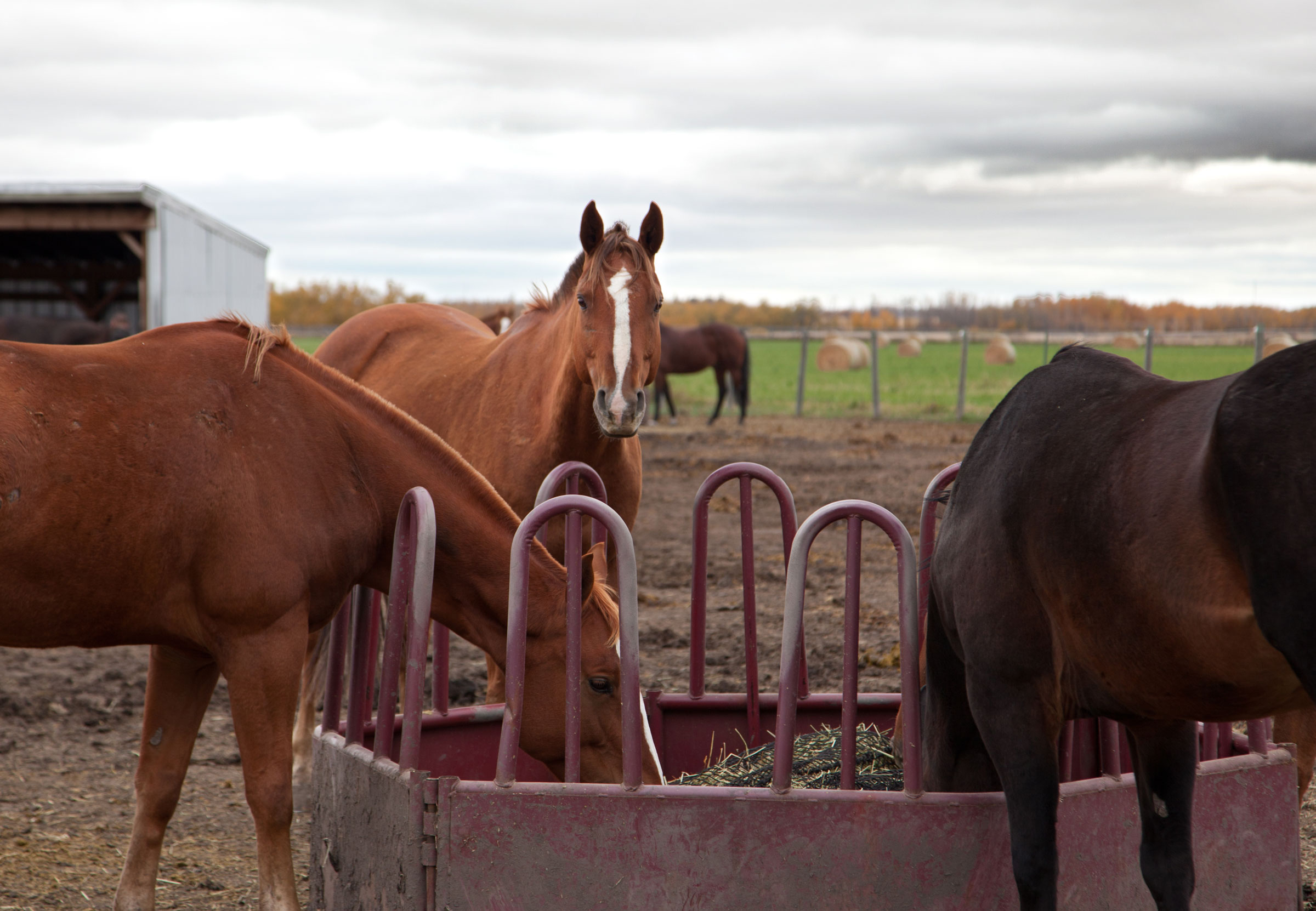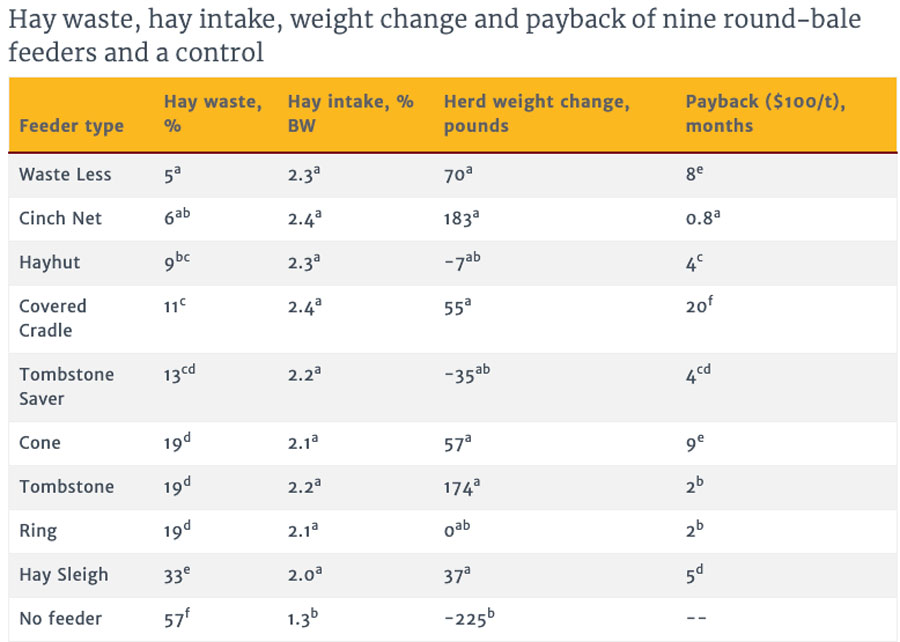
No one likes throwing their money away. Feeding hay on the ground—whether feeding inside or outside—is like flushing money down the drain. Horses pick through the most desirable stalks, leaving the less-palatable pieces. Then they stomp on it, lay in it and defecate on it. When it mixes in with mud, it makes a mucky mess that horses won’t eat.
Using feeders in stalls and in the pasture are the most effective way to reduce hay waste, according to Krishona Martinson, PhD, an equine extension specialist at the University of Minnesota.
She and her colleagues conducted a study to determine which methods of reducing round bale hay waste were most helpful.
The results were clear, it didn’t matter what type of feeder was used—any style reduced waste.
“Using a feeder resulted in less hay waste by at least five percent and up to 33 percent,” she said. “Hay waste was 57 percent when a feeder wasn’t used.”
Choosing a feeder that restricts a horse’s access rather than allowing him to stick his whole head into the bale is more effective at reducing waste compared to other models, she said. Specific results of each style feeder are available to help you decide which is the best for your facility.
You can find information on the study here.
“There’s no significant difference in waste between circular and non-circular feeders of this type,” she added.
Martinson noted that some horse owners choose not to use hanging feeders ins stalls because horses by nature are grazers who eat with their heads down. However, she said that in the research studies conducted thus far, they haven’t seen any adverse impacts on teeth, neck or back health from hanging feeders.
“It’s worth studying further,” she said. “But if you’ve ever watched a horse eat from a hay net or feeder, they eat in a downward position. They take a bite and move their head to a lower position to chew.”




